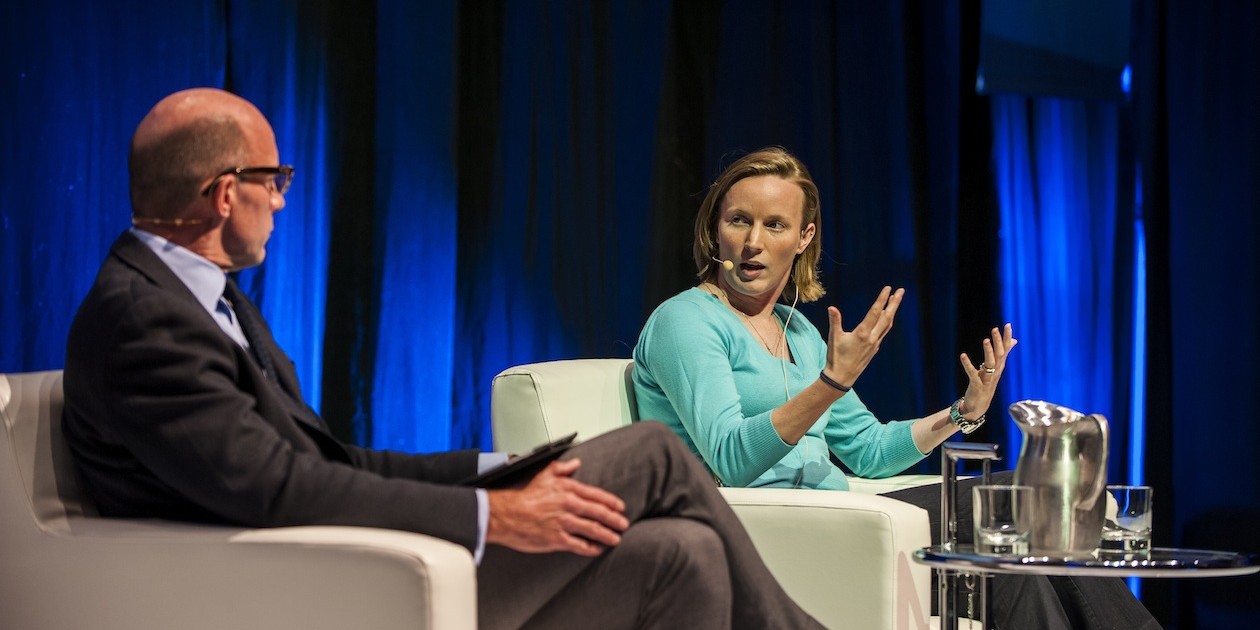Brightroll is making waves in the video space with its all-in-one programmatic platform that connects buyers, sellers, and a whack of measurement partners like comScore, Nielsen and Moat.
Last year Brightroll attacked the Canadian market, hosting Toronto’s first conference dedicated to programmatic video. This year the second annual Brightroll Video Summit Toronto, held Oct. 29, featured top-level speakers from Starcom Mediavest Canada, Nielsen and Kellogg North America, speaking about all things video, programmatic and mobile.
Here’s what we learned:
Still don’t believe programmatic works for brands?
For all the haters that think programmatic is just for low-cost remnant inventory messaging, Kellogg’s senior manager of global media ops Gayle Smilanich has a few things to say. Of Kellogg’s U.S. digital budget, 60-70% goes to programmatic — and almost all of it is spent on brand campaigns. That’s because Kellogg’s measurement shows programmatic performs better than direct buying on brand metrics like lift and purchase intent, as measured by comScore’s consumer research division. “We’re able to compare how programmatic is doing versus going directly to ESPN or Yahoo,” Smilanich said. “Typically we’re seeing better brand lift in programmatic.”
Not everything that’s possible is feasible
Programmatic can do a lot of amazing things — but can your organization? Smilanich talked in depth about the barriers Kellogg faced in using some of the more advanced aspects of programmatic, like dynamic creative or performance optimization. Dynamic creative, where multiple versions of creative are A/B tested against a large in-market audience, runs into the problem of regulatory approval — U.S. CPGs face a lot of restrictions, and that means that every piece of creative has to get reviewed. The regs seem to rule out creating 50 different spots and using them all to see which one performs best. Optimization, meanwhile, turns out to be super time-consuming. As much as real-time campaign course corrections sound wonderful, making minute-to-minute corrections to campaigns is a major resource drain. Smilanich said rather than keeping a twitchy finger on the button, Kellogg has found it’s best to review its data and make optimization decisions once a week — it’s the best balance of real-time and enough-time.
Consumers have broadened the definition of good content
The CBC’s Rebecca Shropshire is of the opinion that the expansion of global media has brought us to the point where good content is good content, regardless of where it’s made or by who. With YouTube and other social video engines, consumers have expanded their idea of what counts as good content — they don’t automatically pan something if it wasn’t created in an L.A. studio with a professional camera and lighting setup. That means Canadian content creators can compete on a fair playing field with the giant content factory to the south, and our content can reach markets that it never did before. The real challenge, these days, is discoverability. If you’ve got content people will like, how do you let them know it’s there? “Unless you have the world’s most viral video, you still have to put some thought into how you market that content,” said Shropshire. “It’s really a game of how do you beat the fragmentation and how do you create enough impact to pull audiences towards your piece of content.”
It’s still more expensive to do digital
IAB president Chris Williams hit us with a “Wait, what?” moment when he offered evidence that digital is still substantially less cost-efficient than TV. On average, two cents of each TV dollar goes to overhead, while in digital it’s eight cents. “It’s been 60 years of television. It’s had a long time to optimize the buys and optimize the workflows,” he explained. That certainly makes sense — and it’s an important reminder that even with all this talk about programmatic efficiency, programmatic only deals with a small fraction of digital media workflow. “Discrepancies, manual workflow, excel spreadsheets — they’re the bane of our existence,” said Williams. “We [the IAB] have been working on this for a few years, but there’s a far greater effort happening right now to address this problem.”
The digital investment gap is smaller in Canada…but bigger in mobile
Canadians spend 31% of their media time on digital devices, and advertisers spend 30% of their media budget on digital, according to Nielsen’s ad expenditure data. That looks pretty good next to the U.S., where consumers spend 30% of time on digital, but advertisers are only spending 25% of budget. But when it comes to mobile, Canadian advertisers are falling behind just as quickly — the audience is spending 14% of their time on mobile, but advertisers are only spending 4% of their budget. Thomas Eaton, Nielsen’s VP platforms, said while there’s always a lag between consumer adoption of a medium and advertiser investment, the gap represents a major opportunity for forward-thinking marketers.
Mobile doesn’t have a primetime
It’s a long-understood fact that most TV revenue (especially in the U.S.) comes from primetime, and for good reason — according to Eaton’s Nielsen data, the hours of 8-11p.m. account for 51% of all TV viewer time. But if you were expecting there to be a similar peak period in mobile, think again. Mobile’s viewership is nearly flat throughout the day — consumers are as likely to be watching mobile video at 9a.m. as they are at 5p.m. So while there may be target dayparts for certain apps or verticals, mobile as a whole is not concentrated on any one time period. Which is good news for advertisers, because with demand spread evenly throughout the day, we shouldn’t expect the hill-to-valley price discrepancy between primetime and all other ad space that has long been the norm in TV.
Find this insightful? Check out Marketing‘s Audience Intelligence conference Nov. 4 to hear Brian Gleason, head of WPP’s Xaxis in North America, address whether agencies should be worried about brands taking programmatic in-house.











